ASC Newsletter Winter 2015
In this issue #15-02:
- ASC Welcomes Back Kim Szatkowski!
- Ask the ASC Support Team Experts!
- Put ASC’s ERISA Expertise to Work for You!
- Need CE Credits? Earn What You Need, When You Need 24/7
- Happy Holidays!
ASC Welcomes Back Kim Szatkowski!
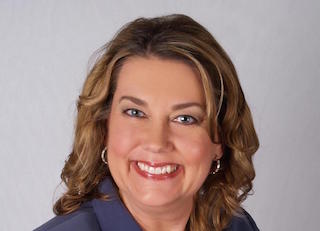
Q: How did you find ASC?
A: After my former employer FDP was sold, I sought out a company with similar high-quality products and great customer service. ASC fitted that model in 2000 when I was originally hired and still does today. I was ASC’s National Sales Director from 2000-2007. In 2007, I left ASC to manage ASPPA’s educational programs. That had been a career goal of mine since I studied for my first actuarial exam. I am thrilled once again to be part of ASC’s sales team, working with familiar and new colleagues and customers.
Q: What do you enjoy most about working for ASC?
A: I love exceeding customer expectations. ASC’s suite of high-quality products that integrate and superior customer service makes that very easy to accomplish!
Q: Why did you choose this career?
A: After graduating with a math and computer science degree, I was hired as Customer Support Rep/Software Trainer at FDP software in Miami. President Michael Goldberg thought I’d also be good at software sales, but I was too shy at the time to share his vision. With the help of ASPPA and some wonderful mentors, I have thoroughly enjoyed my career working in plan administration, database consulting, technical education training, project management, and of course – software sales!
Q: What lesson have you learned on the job that you still keep with you today?
A: Work life balance is achievable and a direct reflection of one’s priorities.
Q: What’s the one accomplishment you’re most proud of? Why?
A: Development and release of Enrolled Retirement Plan Agent (ERPA) Credential for the Internal Revenue Service, which was a very challenging project that was decades in the making. Note that after February 12, 2016, the IRS will no longer be offering the ERPA Special Enrollment Examination (ERPA SEE). Find additional information at ERPA program changes.
Q: If you could meet anyone in the world, who would it be and why?
A: When I was a child, I was complimented by the legendary Packer coach Vince Lombardi for behaving so well. For someone born in Green Bay, it doesn’t get any better than that!
Q: What’s the most important lesson you’ve learned in your life?
A: “Today is not a dress rehearsal.”
Q: If you retired today, what would you do next?
A: I’m a people pleaser (blame Vince Lombardi), so I plan to be in some form of relationship or board management as long as I’m alive.
Ask the ASC Support Team Experts!
You asked, we’ve answered! ASC’s Support team answers your questions. Check out this new feature in the ASC Newsletter.
When will the new Form 5500/SF versions be released on DGEM?
Our DGEM development team will post the new 5500/SF form version when the new forms are available on the EFAST2 website. Users can expect the new form version to be released on January 4th. Other government forms like Form 8955-SSA and Form 5500-EZ will be added to DGEM soon after the final form version has been released by the Internal Revenue Service (IRS). Users can file the prior form version for short plan year or final form filings until December 31th. On January 1st, those prior form year filings will be converted to the new form version soon after the new form version is available on DGEM.
How do I restore a plan to a prior period after updating the plan?
When the plan is rolled forward, the system automatically creates a backup of the plan before it’s rolled forward unless the default option to create backup files is unchecked. The backup files are stored in the \ASC\BACKUP folder where the ASC application is installed. There are more folders starting with the beginning year of the plan before it’s rolled forward like 2014 and then the library that the plan is on like D12. The backup files are portable copy files, and the name is created from the library and case number like D120001 with an additional letter from A to D. If the plan is valued annually then you would only see D120001A. If the plan is valued other than annually, you could see other letters like A,B,C or D each letter representing a mid-year update before the plan is rolled forward to the next year. In this case, the last letter would be the plan the last time the plan was rolled forward. To restore the plan, you have two choices. You can create a new plan and then go to File-Portable Copy, click on setup and browse to the path where the backup files are stored like G:\ASC\BACKUP\2014\D12\ and find the BAF file for the plan they want to restore like D120001A.BAF. If you want to restore the plan to the original plan number then you have to open the plan, do File-Delete Plan-Delete Employees Only which removes the census but leaves the plan in place. Then go to File-Portable Copy and proceed with restoring from the backup file.
Is ASC compatible with Windows 10?
ASC is compatible with Windows 10. Our testing indicates that a workstation with Windows 10 acts like a Windows 7 or Windows 8 workstation as far as ASC is concerned.
How do I code Starting Dates in the Plan Specifications in a Defined Benefit plan?
In reviewing the coding in the plans that are sent to us with support requests, we find that some of our users are confused about how to code the Starting Date field for crediting service for vesting, accrual and formula benefits. There are 5 options for this field – 1- Hire, 2- Plan Year, 3- Entry, 4- BOY Entry and 5- BOY Eligible. Option 1- Hire should be used for plans that measure service based on employment years for each employee beginning with the employee’s hire date and ending on each anniversary of the hire date. Each employee will have a different measurement year under this option. Option 2- Plan Year is the option used most often in plans. A year of service under this option is earned for each plan year of service since hire in which the hours coded in the Basis of Year field are completed, most typically, 1,000 hours. Option 3- Entry measures service based on participation years for each employee beginning with the employee’s date of entry and ending on each anniversary of the entry date. Option 4- BOY Entry measures service on a plan year basis, but the first plan year included in the calculation is the plan year that includes the participant’s Entry date. Option 5- BOY Eligible is a seldom used option that also looks at plan years but applies the plan’s eligibility provisions to participants without regard to the plan’s effective date. If at any time you need to recalculate the Vesting Start, Accrual Start or accrual year fields for a participant or participants with Status A, change the status to C and run complete calculations.
Put ASC’s ERISA Expertise to Work for You!
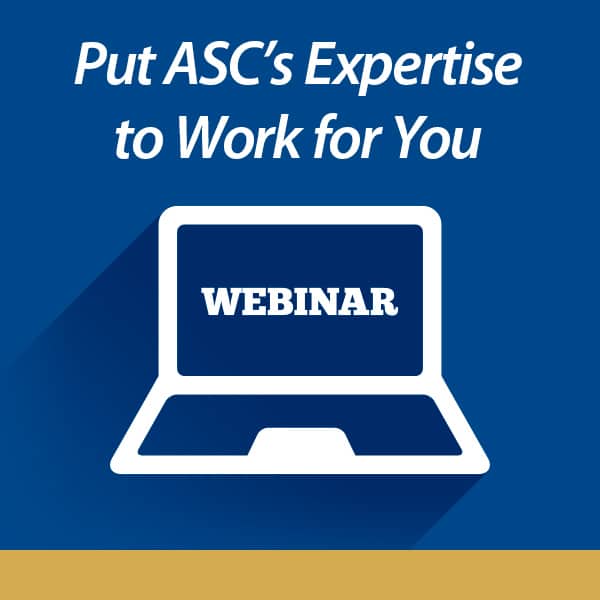
Stay industry-current with ERISA experts, Charles Lockwood, J.D., LL.M. & John Griffin, J.D., LL.M. ASC’s IRS approved webcasts qualify for ERPA, NIPA, ASPPA, Enrolled Agent and JBEA continuing education credit.
Click here to see the 2016 ASCi Webcast Calendar.
Need CE Credits? Earn What You Need, When You Need 24/7
ASCi’s recorded CE webcasts are available all the time, 24/7, so you can get the information and the CE credit you need at times that are convenient for you.
Click here for a full selection of recorded CE credit webcasts.
Happy Holidays!
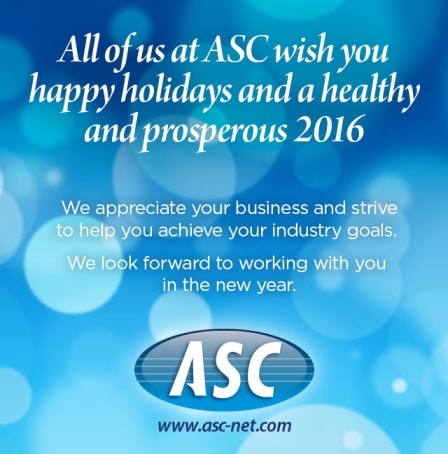
We hope you enjoyed this winter 2015 newsletter. If you have questions, please contact us. We look forward to hearing from you.



